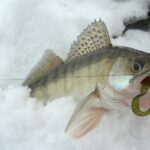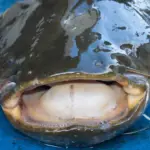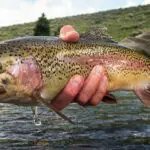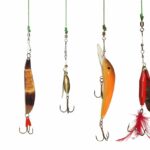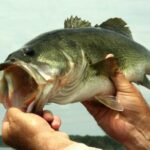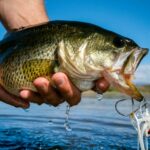The Lindy rig is a staple of live bait fishing and has been since its introduction in the 1960s. It’s most frequently used to fish for walleye but is ideal for catching several different fish, including catfish, trout, and bass.
Named after its inventor Ron Lindner, it’s a very popular rig when it comes to catching these kinds of fish, and for good reason.
But how do you set up a Lindy rig, and what are the different variations of the rig? The following article will break down everything you might need to know about this fishing rig.
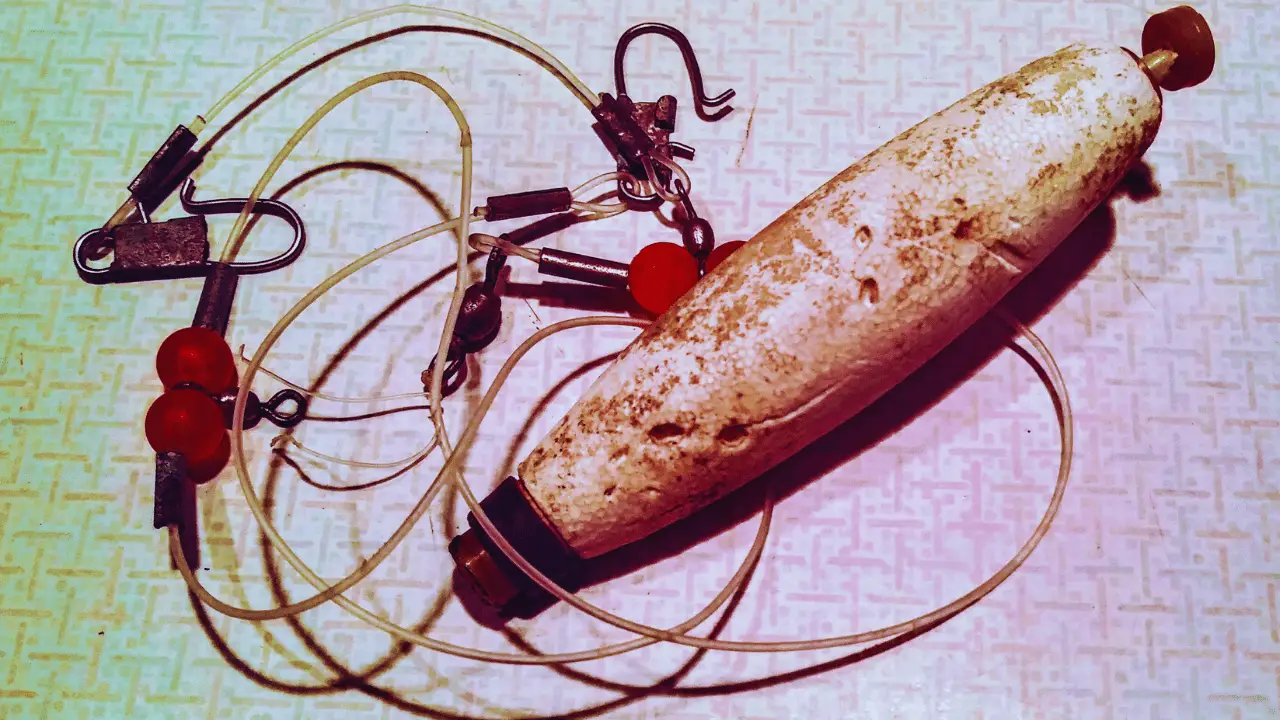
The Lindy Rig: Overview
A bottom fishing rig, the Lindy rig consists of the snap swivel, the sliding sinker, and the leader, which accompanies a snelled hook.
The lindy hook is attached to a long leader line, which is then connected to the sinker. When a fish takes the bait, the sinker pulls the lure into the water, whereupon the Lindy hook catches onto the fish.
It’s most often used for catching walleye, but can also be used for several different fish, including trout, catfish, and bass- any fish that can be found by the bottom of shallow bodies of water.
Since its introduction in the 1960s, there have been several different variations of the Lindy rig. One of the most common variations includes a sliding float, which allows the bait to float without touching the bottom of the body of water’s floor).
A lot of anglers make up their version of the Lindy rig, and nothing is stopping you from doing the same thing once you know how to set up the most basic version of the rig.
The History Of The Lindy Rig
The inventor of the Lindy rig was Ron Lindner. He arrived at the concept back in 1968 and is considered a legend amongst the angling community. It’s widely considered one of the most effective rigs when it comes to bottom fishing, particularly when fishing for walleye.
Before his death, it’s believed that more than 70 million pre-tied rigs had been sold- and this isn’t even accounting for all the people who tie their own Lindy rigs.
How To Set Up The Lindy Rig
Constructing a basic Lindy rig is a fairly simple process- the only step you might struggle with is tying the knots correctly. It’s worth learning these knots, though, as they’ll likely improve your overall skills as an angler.
To make up your rig, you’re going to require a mainline (ideally a monofilament or test braid, between 10 and 15 pounds), a leader (ideally test fluorocarbon at around four to six pounds), a weight (a sliding sinker between one-eighth of an ounce to an ounce), a snap swivel between size four to size six, and an octopus hook between size two to size six.
As for the ideal rod, this rig is best suited to a spinning rod that’s between six to seven feet long. It should be either lightweight or medium-lightweight and should allow for quick action.
The first step to setting up the rig is to tie your snap swivel to the mainline, but only after you’ve threaded the mainline through your sliding sinker.
The next step is to snell your hook onto your leader line, then measure between two to five feet for the leader line, and tie a knot at the line’s end. The final step is clipping your leader’s loop onto your snap swivel.
Weights
To make the most of a Lindy rig, you must be using the correct weights. The traditional Lindy rig features a walking sinker. This is flat, long, curved, and made from lead. The eye of the sinker is big enough that threading the line through is very easy.
If you’re looking for an advanced iteration, you can try a no-snagg sinker. This sinker features more of a curve than the traditional walking sinker, and there’s also an extension of wire at the bottom, meaning it’s unlikely to get caught on anything in the water (hence the name).
Most kinds of sliding weights will work well with the rig, but because you’re going to be bottom fishing, a no-snagg sinker is probably best because it prevents the weight from getting snagged.
Variants Of The Lindy Rig
There are several different versions of the Lindy rig. Anglers make adjustments to their rig depending on their personal preferences, on the kind of fish they’re trying to catch, and on their skill level. It’s often a case of trial and error until you find what works best for you.
Most of the adjustments are in the swivel, the leader length, and the style of the hook. Some anglers also go for a larger hook point.
The Floating Lindy Rig
Amongst the most common variations of this rig is the floating Lindy rig. The purpose of this variation is to keep both the lure and the hook raised from the bottom of the body of water.
The exact distance depends on both the length of the rod and on the leader you’re using.
Some lines will be designed more for floating, or you can add a float or a bobber to the line, which will serve the same purpose (holding up the bait from the floor).
Both trout and walleye are known for being tempted by the movements of natural lures, so anglers often use minnows, crawlers, or other live lures.
The ideal distance of the live bait from the floor is around 12 inches, as this tends to be when trout, walleye, and other shallow-level fish will be most likely to go for the lure.
The floating rig is also less likely to get caught on something at the bottom of the water because the lure and the hook are further up.
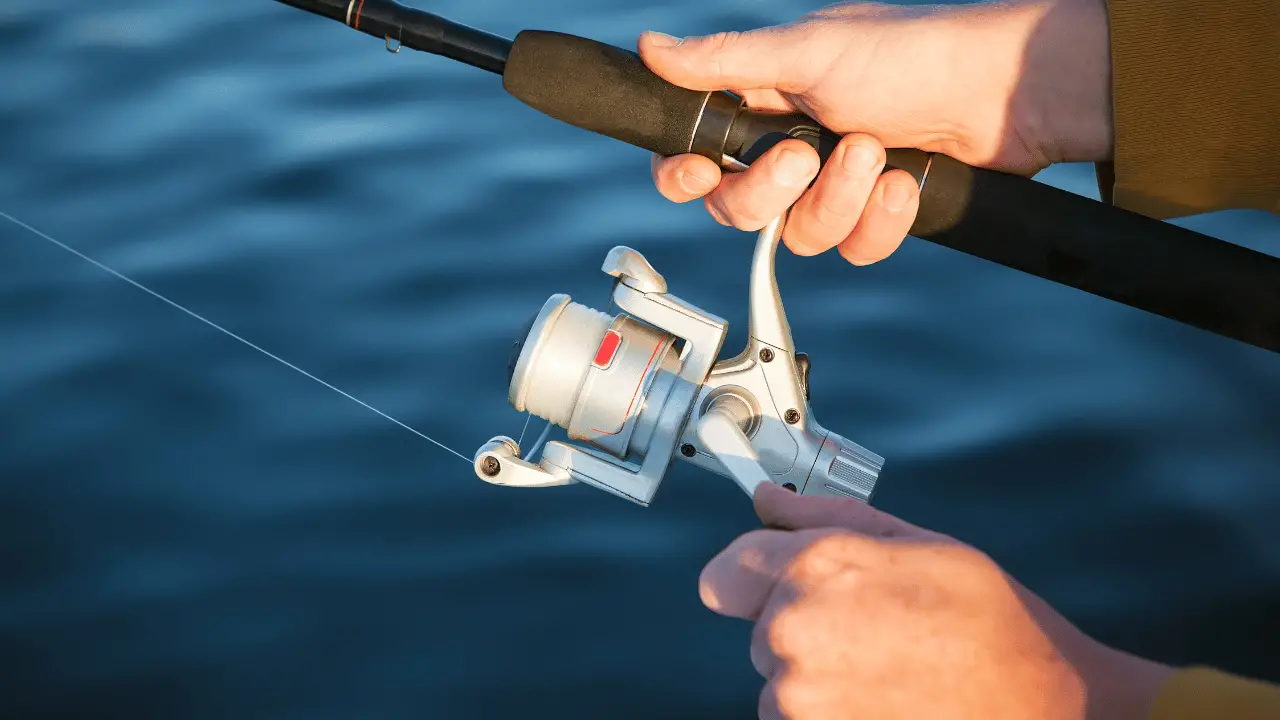
Lindy Rig With A Floating Jig Head
Another common variation of this rig is the inclusion of a floating jig head. It serves a similar purpose to the floating Lindy rig, in that it’s designed to raise the bait above the floor. It’s most commonly used in conjunction with live minnow bait.
To tie this rig, the process is the same as tying the traditional rig until you get to the snelling stage. Rather than snelling your hook to the leader, you should instead tie on a jig head (between size two to size four).
There are some different colors you can choose for your jig head, so feel free to try a few different ones until you’ve found one that works best for you.
Lindy Rig With A Crawler Harness
This is a very popular rig amongst anglers experienced with walleye fishing, particularly in the summer. It’s best suited to when you’re using nightcrawlers for live bait and is very successful when it comes to bringing in walleye.
All you need to do to set up this rig is tie your loop to your swivel on the rig once you’ve prepared the harness.
If the live nightcrawlers you’re using are quite big, you might want to use a small bobber or float to make sure they’re far enough from the bottom of the water.
Using The Lindy Rig
There are a number of different ways to use the rig. The two most common methods are trolling and drift fishing.
Trolling With A Lindy Rig
The most important thing to keep track of when you’re trolling with the Lindy rig is that you never lose contact with the bottom of the water.
Your line should remain at an angle of 45 degrees, and you should regularly be checking that you’re making contact with the bottom. The easiest way to keep track of this is by checking the sliding sinker.
The best trolling speed tends to be between 1 to 1.5 miles per hour when you’re using this kind of rig. Make sure the sinker is between one ounce to one and a half ounces- it needs to be heavy enough to sink to the bottom.
When you’re using a live nightcrawler bait for trolling, you mustn’t be going too quickly, as the bait might come free of your harness.
Drift Fishing With A Lindy Rig
This rig is great for drift fishing because it helps you to keep the bait within the best strike zone without any hassle. Just like when you’re trolling with the rig, there must be uninterrupted contact between the bottom and the sinker.
Another reason this rig is so well suited to this kind of fishing is that there’s less chance of your sinker getting snagged on something near the bottom of the water.
Fishing From The Shore Using A Lindy Rig
Unlike trolling and drift fishing, it’s better to use a fixed tactic when you’re fishing from the shore. Just cast your line and hold firm until the fish come to you.
Conclusion
This rig is one of the most effective methods when it comes to bottom fishing. Whether you’re using the traditional rig or mixing things up with your variations, you’re bound to be catching walleye, trout, and other shallow-level fish in no time.
The Lindy rig can be used for trolling, drift fishing, and fishing from the shore. You can adjust your exact setup depending on your level of skill, and the size of fish you’re hoping to catch. It’s a highly adaptable rig, which is one of the reasons it’s so popular.
- Do You Need An Indicator For Nymph Fishing? - November 16, 2023
- Fishing Safety Tips For Families - September 25, 2023
- What Is The Best Time To Night Fish At A Lake? - September 18, 2023


